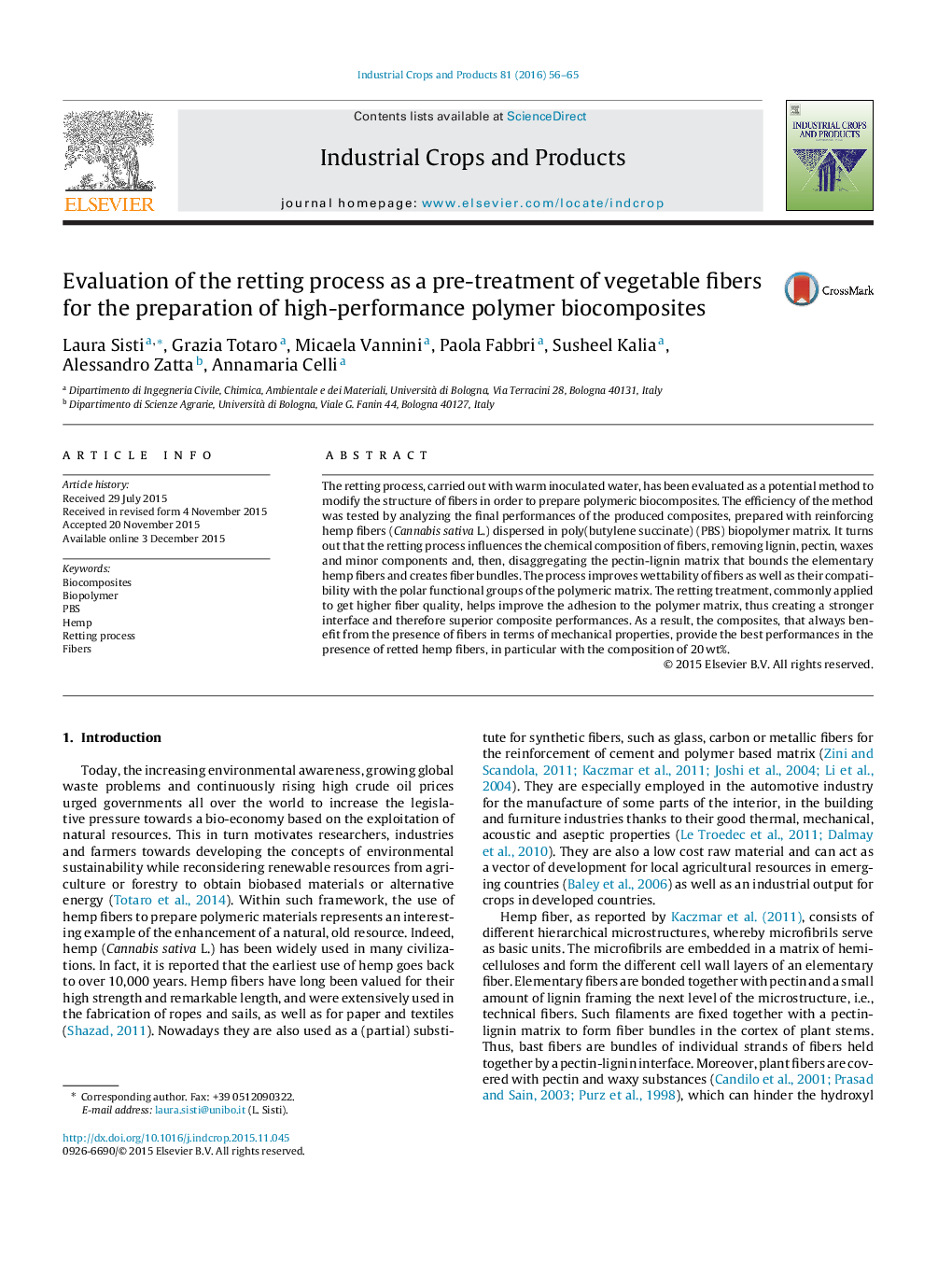| Article ID | Journal | Published Year | Pages | File Type |
|---|---|---|---|---|
| 4512452 | Industrial Crops and Products | 2016 | 10 Pages |
•High performance polyester biocomposites can be prepared with retted hemp fibers.•The retting process improves wettability and adhesion of fibers to the matrix.•Retting treatment modifies composition, morphology and surface properties of fibers.
The retting process, carried out with warm inoculated water, has been evaluated as a potential method to modify the structure of fibers in order to prepare polymeric biocomposites. The efficiency of the method was tested by analyzing the final performances of the produced composites, prepared with reinforcing hemp fibers (Cannabis sativa L.) dispersed in poly(butylene succinate) (PBS) biopolymer matrix. It turns out that the retting process influences the chemical composition of fibers, removing lignin, pectin, waxes and minor components and, then, disaggregating the pectin-lignin matrix that bounds the elementary hemp fibers and creates fiber bundles. The process improves wettability of fibers as well as their compatibility with the polar functional groups of the polymeric matrix. The retting treatment, commonly applied to get higher fiber quality, helps improve the adhesion to the polymer matrix, thus creating a stronger interface and therefore superior composite performances. As a result, the composites, that always benefit from the presence of fibers in terms of mechanical properties, provide the best performances in the presence of retted hemp fibers, in particular with the composition of 20 wt%.
